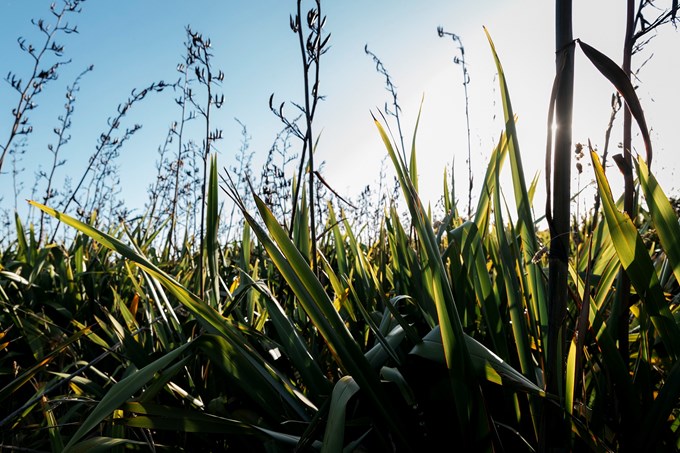More than 74,000 new native trees and shrubs will be planted on the Tūpuna Maunga (volcanic cones) of Tāmaki Makaurau / Auckland by 2021. More than 19,000 of these have already been planted over the last twelve months.
Native trees and shrubs planned by 2021 include (figures are approximate):
- Ōhuiarangi / Pigeon Mountain – 33,300
- Te Pane o Mataoho / Te Ara Pueru / Māngere Mountain – 13,200
- Maungarei / Mt Wellington – 12,100
- Ōwairaka / Te Ahi-kā-a-Rakataura / Mt Albert – 10,100
- Matukutūruru / Wiri Mountain – 5400
Vision to restore original ecology
Paul Majurey, Chair of the Tūpuna Maunga Authority says that large-scale planting has always been part of the vision to restore the maunga.
“Since the Authority formed in 2014, we have been laying the groundwork to reinstate original ecology and biodiversity and reconnect ecological networks both within and between the maunga.
"Through this work we are also protecting indigenous plant and animal species already present on the maunga, some of which are threatened species,” says Majurey.
Historically, vegetation on the maunga was typically Pūriri ngahere / forest; an ecosystem type present in highly fertile areas associated with volcanic and alluvial deposits, and which are now classified as critically endangered in Auckland. Volcanic Pūriri forest included diverse native plant species and were habitat for thriving populations of invertebrates, amphibians, reptiles, birds and bats all contributing to the unique character of Auckland’s pre-human biodiversity.
Through the restoration planting, common species that could begin returning to the maunga include tui, korimako / bellbird, ruru / morepork, piwakakawaka / New Zealand fantail, riroriro / grey warbler, kereru / New Zealand woodpigeon, tahou / silvereye, and kotare / kingfisher. Native plant species that will support the regeneration of native birds by providing food sources will include ferns, karaka, puriri, totara, mahoe, mangeao, puka, kohekohe and titoki.
Growing traditional knowledge and practice
“There is also a human focus to our planting plans for the maunga,” says Majurey.
“A kaitiaki regime will be developed to ensure that knowledge of biodiversity values and best management practices is gathered, developed and passed on. In time there may be cultivation and cultural harvesting of plants for kai, traditional medicinal purposes, textile materials, and other cultural requirements.”
Youth and community involvement
“We will also be looking at projects that tamariki and rangatahi from local schools and tertiary institutions can engage in and contribute to increasing restoration and biodiversity outcomes," says Majurey.
"Planting days that involve local communities will be an important part of the planting programmes.”
At Ōhuiarangi / Pigeon Mountain in Howick, over 1000 children from local schools will participate in three planting days planned for August this year. Around 150 community members have already participated in planting days there so far.
Around 100 school children from local Māngere Bridge schools attended planting days at Te Pane o Mataoho / Te Ara Pueru / Māngere Mountain in early August.
Seeking volunteer planters
Volunteers are now being sought for community planting days at Ōwairaka / Te Ahi-kā-a-Rakataura / Mt Albert on Saturday 24 August 11am-2pm, and at Maungarei / Mt Wellington on Sunday 25 August 10am-12pm.
Those interested can email MaungaAuthority@aucklandcouncil.govt.nz
More information about management of vegetation and ecological restoration on the Auckland maunga can be found in the Tūpuna Maunga Integrated Management Plan and the Tūpuna Maunga Strategies documents available online at maunga.nz


